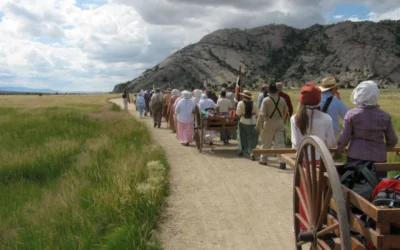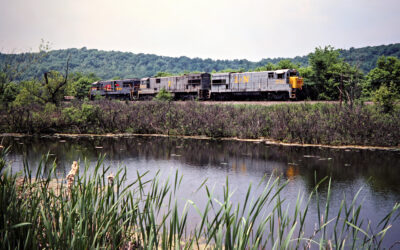All genealogists encounter brick walls, but just as frustrating are mysteries which come up in their research. Sometimes, however, mysteries are more solvable. For sure, they can be more fun to unravel.
Sally Anne Byrne Marries James Dunn
Recently, I had the pleasure of helping an old college friend from Kentucky research her father’s heritage, which was solidly grounded in Ireland. His maternal great-grandmother Sally Ann (Byrne) Dunn (1809-aft. 1888) was born in Queen’s County (now Co. Laois) and emigrated with her parents and two siblings (Pierce Byrne and Margaret Byrne) to New Brunswick, Canada, in the early nineteenth century. Sally married James Dunn in Bartibogue, New Brunswick, Canada, on February 6, 1826.
Their wedding was witnessed by her brother and sister. Sally and James Dunn had ten children, all of whom were born in Canada between 1828 and 1845. Most of their children, however, eventually settled in the US Midwest. This is evidenced by Sally Dunn and her children appearing in Iowa and US census records in 1850 without James Dunn, who apparently had passed away by then. Indeed, Sally remarried in 1850 in Iowa.
Why Did She Move to Iowa?
The question was, why did widowed Sally Dunn and her children leave New Brunswick and move to Iowa when travel would have been very challenging, especially for a large family? Moreover, Sally was Roman Catholic, and Iowa was not necessarily a haven for her religion. None of her descendants knew the answer. A mystery was afoot!
There are many miles between New Brunswick and DeWitt, Iowa.
[Source: WikiMedia – Map of USA with State Names]
The crucial clue for solving this mystery came from census reports that showed that Sally’s siblings lived in DeWitt, Iowa, where she and her family settled. More to the point, as gleaned from the timing of the births of their youngest children, Sally’s siblings were already in DeWitt within a year of the birth of Sally’s youngest child in Canada in 1845.
One can imagine if Sally lost her husband after their last child was born, she would have been inclined to seek help from her brother and sister and follow them to Iowa. Indeed, her siblings’ support is evidenced by the living arrangements of her children.
For example, according to the 1850 US Census, her son Joseph Dunn (11) and daughter Sarah Regina Dunn (7) were living with their Aunt Margaret (Byrne) Horan and her family in DeWitt. Per the 1870 US Census, Joseph Dunn (grocer) and his sister Kate Dunn (dressmaker) were living in DeWitt with the family of their first cousin Mary Elizabeth (Horan) Buchanan, the eldest daughter of Margaret (Byrne) Horan.
But Why Did Her Siblings Move?
While the reason for Sally Dunn’s settling in DeWitt, Iowa, appeared clear, the next question was, why did her siblings move there in the mid-1840’s? The answer to that question was less clear, but was subject to reasonable speculation.
Birds eye view of the city of De Witt, Clinton Co., Iowa 1868 [Source: Library of Congress]
A fortuitous telephone call to the Central Community Historical Society Museum of DeWitt, Iowa, led to a conversation with two members of its staff about DeWitt’s St. Joseph Church and Cemetery where many members of the Byrne and Horan families are buried.
These extremely helpful staff members sent me “A History of St. Joseph Parish, DeWitt, Iowa” (“History”), which has implications here.
Tip: I cannot stress enough how helpful local historical or genealogical societies and local libraries can be to genealogists. Don’t hesitate to call them!
Was it Their Faith?
Besides describing how the first Roman Catholic church in DeWitt was the log cabin of Sally Dunn’s brother-in-law William Horan, the History relates that many Catholic Irish from the East settled in Iowa because of Paul Edward Gillin’s articles in the Boston Pilot Newspaper describing in glowing terms the Iowa country he had passed through in his effort to sell religious books, and soliciting young men as scholars to attend Notre Dame College and young ladies to attend the Ladies Seminary near there.
He advised Catholics to leave their small worn-out eastern farms and the crowded cities and come west. Perhaps Pierre Byrne and Margaret (Byrne) Horan read or heard about Paul Edward Gillen’s exhortations and “invitation” to fellow Irishmen to leave the East Coast and travel to Iowa.
This theory is not provable, of course, but it was not far fetched either why Sally Dunn’s siblings left New Brunswick, Canada, and headed southwest.
Editor’s Notes
We appreciate that the author emphasizes how important local libraries and historical societies are to family researchers. As the author stated, don’t hesitate to each into the local county resources for help busting a brick wall.




